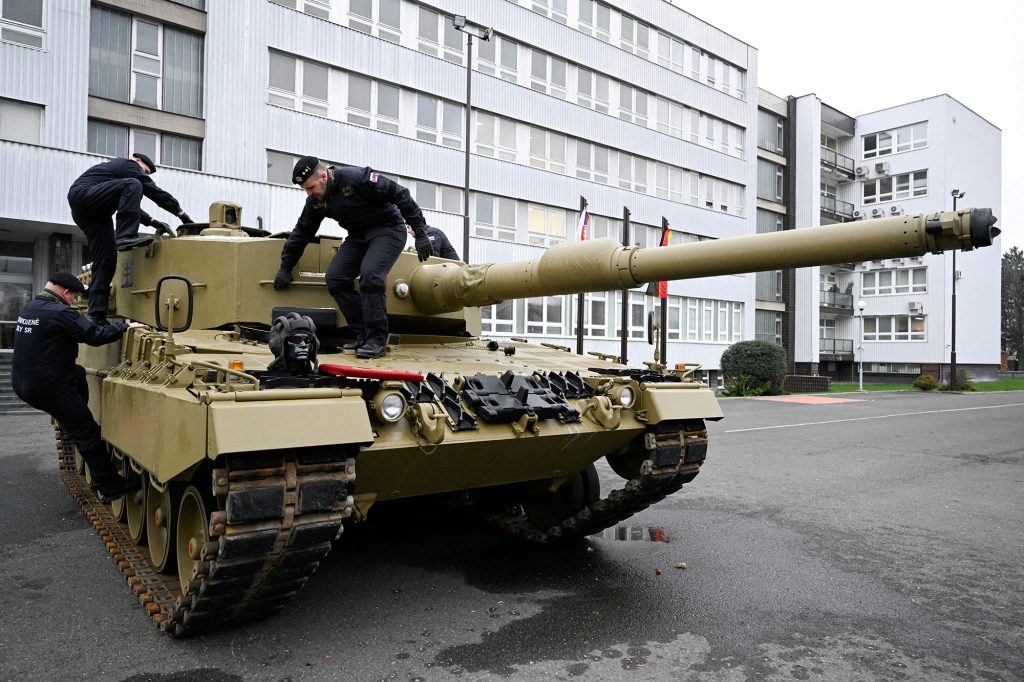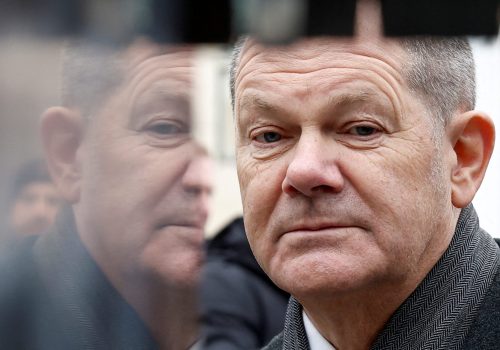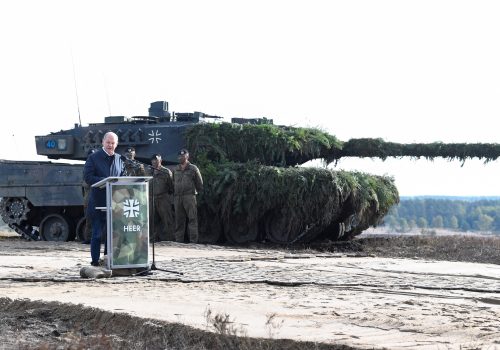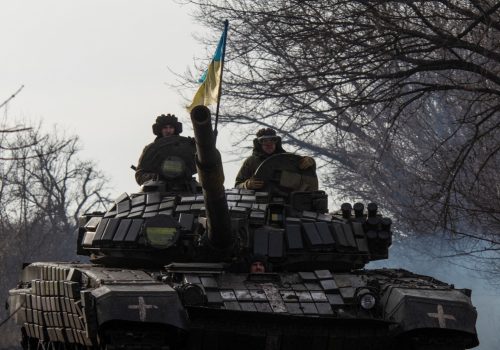JUST IN
Tanks for the help. German Chancellor Olaf Scholz announced today that Berlin will send Leopard 2 tanks to Ukraine—and allow other European nations to send their own. President Joe Biden then announced that the United States will in turn send its own M1 Abrams tanks. What difference will these deliveries make on the battlefield as Russia’s invasion nears the one-year mark? What does Germany’s move, after much delay, signal about its approach to the war effort? Our experts are rumbling in.
TODAY’S EXPERT REACTION COURTESY OF
- John Herbst (@JohnEdHerbst): Senior director of the Eurasia Center and former US ambassador to Ukraine
- Chris Skaluba (@ACScowcroft): Director of the Scowcroft Center’s Transatlantic Security Initiative and former principal director for European and NATO policy at the US Defense Department
- Leah Scheunemann (@LeahScheun): Deputy director of the Scowcroft Center for Strategy and Security’s Transatlantic Security Initiative and former Pentagon official focused on international security policy and Senate Armed Services Committee professional staff member
- Daniel Fried (@AmbDanFried): Weiser family distinguished fellow and former US ambassador to Poland
Treads on the ground
- The tanks are a “significant step forward” in the race to arm Ukraine, John tells us, and the timing is critical.
- With Russia making “minor gains” near Bakhmut and Soledar in eastern Ukraine, as well as launching “small offensive operations in the Zaporizhzhia region,” John says, “the tanks will help Ukraine defend its positions with fewer casualties in both locations. They will also prove invaluable if Moscow launches a major offensive from Belarus or elsewhere this year—something that Ukraine’s intelligence services expect.”
- And if the promised tanks arrive in the next few months (which is no sure thing), they could be a part of Ukraine’s next big push, John adds: “On the flat terrain in Ukraine’s east and south, they could spearhead the counteroffensive.”
- Those will need to be Leopards, because the thirty-one pledged US Abrams tanks won’t be arriving soon. Leah points out that the Abrams will be drawn from the Ukraine Security Assistance Initiative, “which is on a longer timeline and a pot intentionally meant to secure Ukraine over the long term. This isn’t the decisive assistance needed for spring offensives.”
- But Leah says these delays should not be cause for concern in Kyiv. They are, rather, a signal of US long-term backing: “This package could take months to arrive, will take months to train on, and would likely include sustainment and repair assistance for the future—further solidifying the promise of US support for Ukraine’s victory.”
- In recent weeks, the intensifying public squabbling over whether to send the tanks had exposed divisions in the West. “Ukraine clearly believed that the tactical advantages the tanks will provide on the battlefield were worth the risk of public infighting among Ukraine’s supporters,” Chris says. “It looks like that bet has paid out.”
‘Zeitenwende’ zeitgeist
- The pressure was greatest on Germany, with Ukrainian President Volodymyr Zelenskyy and allied countries—particularly Poland, Dan points out—pressing for the Leopards. In Dan’s view, “the Germans were working through the collapse of their long-held assumptions about Russia, namely that dialogue was always the answer and cooperation was achievable.”
- While the outside pressure mattered, Dan says Berlin acted because “Germans could see for themselves what Putin’s Russia has become: a bloodthirsty aggressor bent on conquest and killing.”
- The move signifies a new approach to Russia across the West, Dan argues: “That policy starts with support for Ukraine on the battlefield and in the future, and realism about Russia as an adversary that needs to be contained and weakened so it can no longer start wars or otherwise commit aggression.”
The next ask
- The tanks are welcome, but “Zelenskyy will no doubt return to his successful playbook to pressure allies for more,” such as longer-range artillery and fighter jets, Chris says.
- That dynamic contributed to Germany’s “brake-pumping,” Chris said, based on Berlin’s “misguided belief” that it could control whether the war escalates. “The intensity of this most recent debate suggests Zelenskyy’s balancing act will only become more difficult as he keeps pushing for help.” And any serious disagreement among allies represents a “strategic victory for the Kremlin,” he adds.
- Long-range artillery and missiles—with a range up to three hundred kilometers—“would enable a fast and successful counteroffensive,” John says, by enabling Ukraine to hit Russian logistical centers that are set up just outside the current artillery range.
- “At some point, Washington will likely relent and send these systems,” John tells us. “But the delay only increases the cost for Ukraine in casualties and lengthens the war. The United States can and should do better.”
Further reading
Tue, Jan 24, 2023
Leopard tank saga: Germany remains haunted by history
UkraineAlert By
Germany's reluctance to send Leopard 2 tanks to Ukraine reflects the ongoing influence of war guilt for the crimes of the Nazi era while also highlighting a failure to differentiate between modern Russia and the Soviet Union.
Tue, Jan 24, 2023
What’s behind the Western divide over arming Ukraine?
New Atlanticist By
Two schools of thought have emerged on arming Ukraine—defeat Russia vs. avoid escalation. A recent conference hosted by the Atlantic Council in Stockholm investigated the roots of the divide.
Sat, Jan 21, 2023
Davos Dispatch: Why now is the time for a ‘Ukraine surge’: military, intelligence, economic and other support to defeat Putin
Inflection Points By Frederick Kempe
Despite the successes of the NATO summit, Russia's missile strike on a Ukrainian shopping mall put the brutality of Putin's war into stark relief.
Image: Members of the military walk on a tank, as Germany delivers its first Leopard tanks to Slovakia as part of a deal after Slovakia donated fighting vehicles to Ukraine, in Bratislava, Slovakia, December 19, 2022. Photo via REUTERS/Radovan Stoklasa/File Photo.



